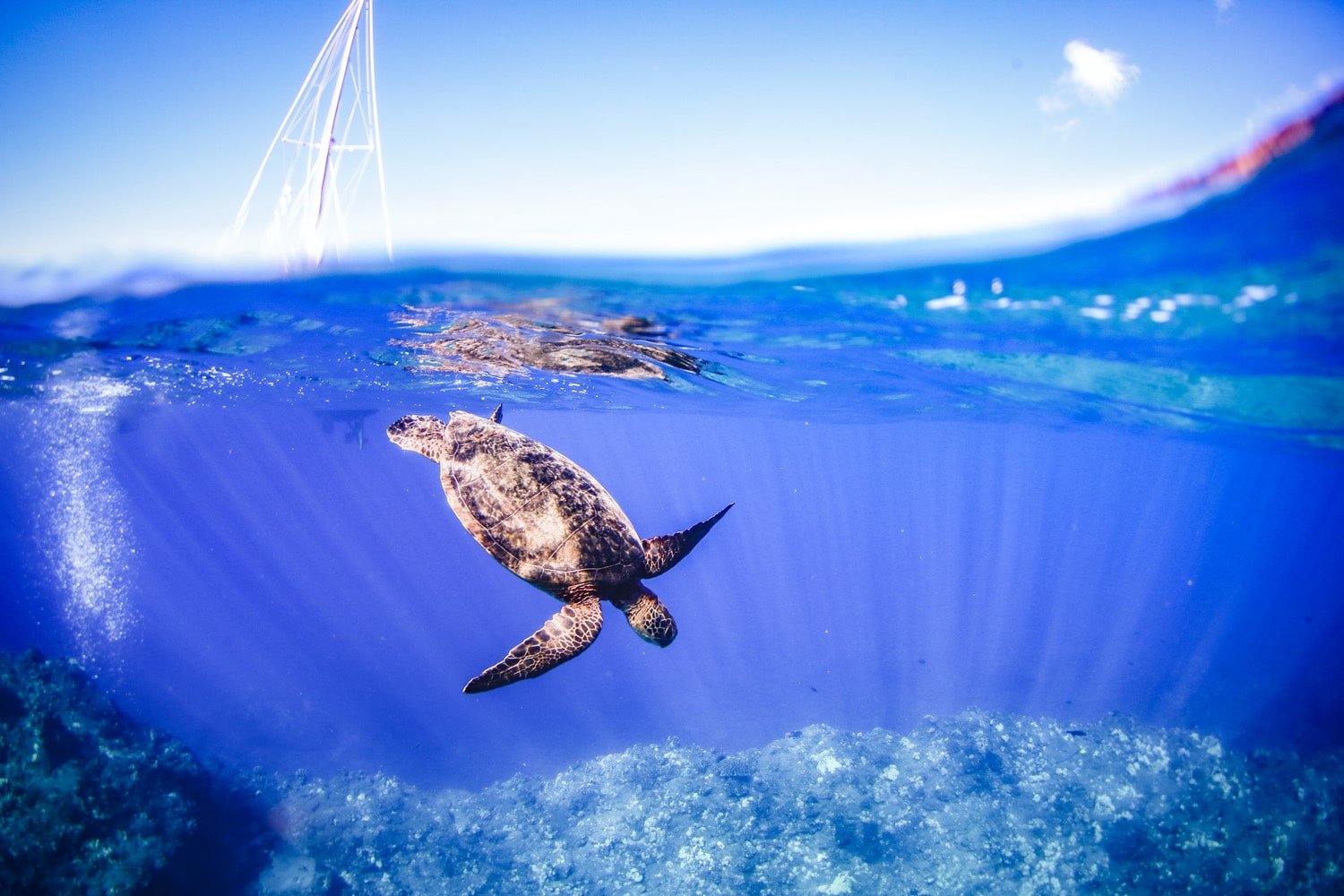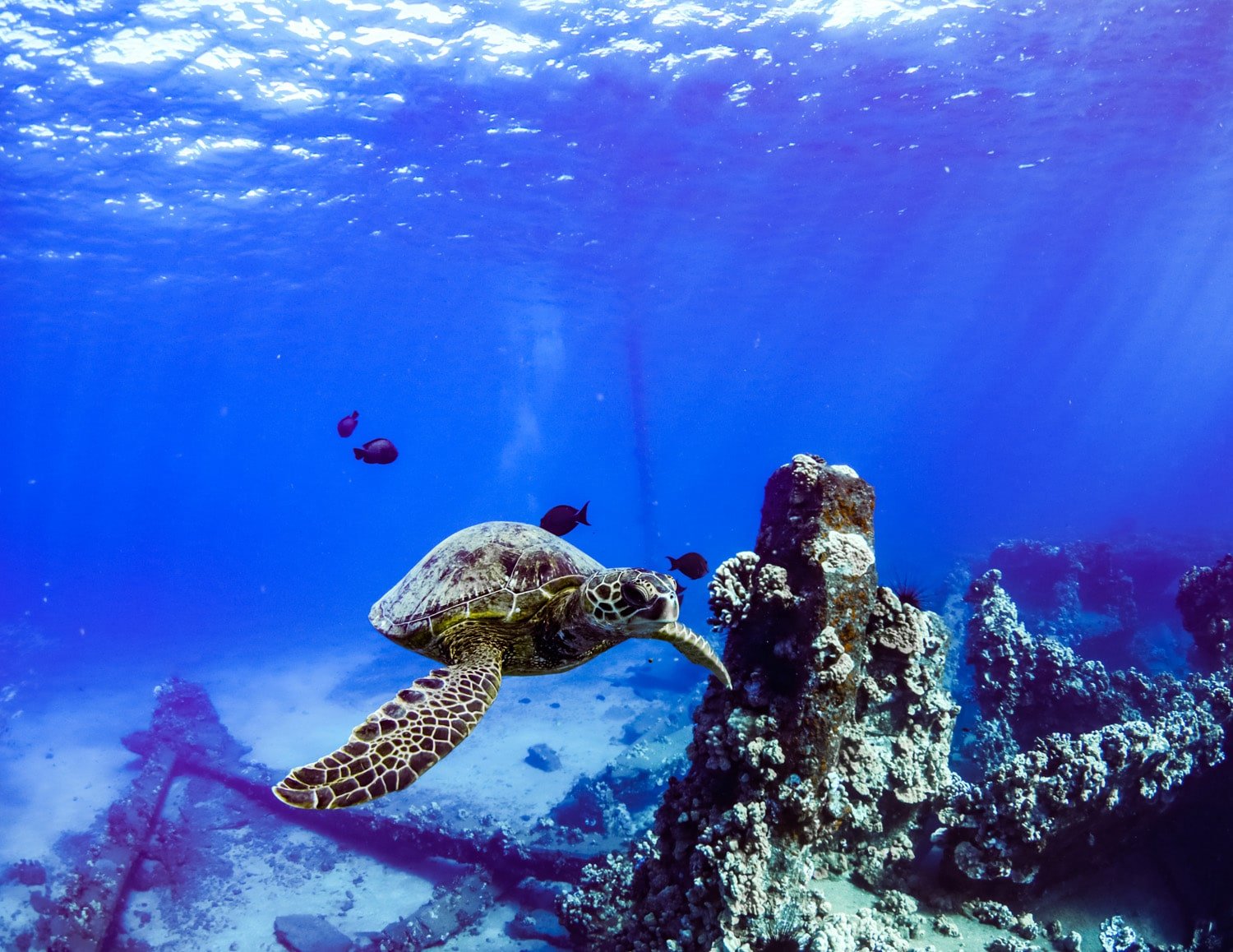A Guide To Snorkeling With Sea Turtles In Maui
You’ll never forget the very first time you go snorkeling in Maui with sea turtles.
Time seems to suddenly stop when you first catch sight of these giants, and it's a curious combination of relaxation and excitement whenever you see one in the water.
Commonly known by their Hawaiian name of honu, Hawaiian green sea turtles are a familiar sight along many of Maui's shorelines, and we frequently find them on our snorkeling tours from Ka'anapali and Ma'alaea.
Even though they’re relatively common, we still get a lot of questions about our honu, so here are some of the most frequently asked questions about snorkeling with sea turtles in Maui.
Where Can I Swim With Sea Turtles?
On the West Side of Maui, some of the best places for snorkeling with sea turtles include Honolua Bay, Mokulei’a Bay, Pu’u Keka’a (Black Rock), Napili Bay, Mala Wharf, and Olowalu.
On the South Side of Maui, places such as Nahuna, and Maluaka Beach all offer a high likelihood of encountering Hawaiian green sea turtles. For more information on what seasons are best for snorkeling, check out our article on Understanding Maui’s Wind, Weather, and Waves.
On Lana’i, while sea turtles are occasionally encountered in Hulopo’e Bay, they aren’t seen with the same frequency as along the shoreline of Maui.
*Note: Despite the clear water and world-class snorkeling conditions, Molokini Crater is not a place to find sea turtles. This is why our snorkeling tours to Molokini often visit a second spot where there is a much higher likelihood of snorkeling with sea turtles.
Can I Touch The Turtles?
No. Hawaiian green sea turtles are federally protected and it's illegal and harmful to touch or harass them. In order to be a responsible snorkeler, be sure to give turtles plenty of space and make an effort to not overcrowd them.
Occasionally snorkelers will get really lucky and will get a close encounter or "fly-by", but even if a turtle swims directly towards you it's important to stay out of their way. The Department of Land and Natural Resources recommends "keeping a 6- to 10-foot buffer as a best practice for sea turtle viewing."
They go on to say, "In Hawai‘i, sea turtles are protected by the Hawai‘i Revised Statutes (Chapter 195D) and Hawai‘i Administrative Rules (13-124).
Although federal and state wildlife conservation laws differ in some respects, all prohibit actions that can harm, injure, kill, or otherwise disturb sea turtles without a permit. Feeding or touching turtles in any way is considered a disturbance and therefore illegal."
- DLNR REMINDS PUBLIC TO RESPECT THE LAW WHILE VIEWING SEA TURTLES
Do We Need To Give Them Room To Breathe?
Yes.
Turtles are air breathing reptiles which every so often need to surface and breathe. If a turtle has a pack of 25 snorkelers above it, the distressed turtle can go into a panic and drown before it reaches the surface.
Are Hawaiian Green Sea Turtles Endangered?
While not officially classified as an "endangered species", Hawaiian green sea turtles are listed as "threatened" under the federal Endangered Species Act.
After mass harvesting as a source of food depleted the population of turtles, the turtles were granted with federal protection in 1978. Even though the population of turtles has grown, it will be a long, slow process until the species thrives in the way it used to.
Despite being protected, sea turtles won't lay eggs until they are 25 or 30 years old, and when the eggs finally hatch, the turtles are immediately vulnerable to numerous threats such as rodents, starvation, waves, and sharks.
Of all the hundreds of eggs which are laid in a clutch, only a handful will survive until to adulthood.
How Long Can A Turtle Hold Its Breath?
If you're snorkeling with a sea turtle and it disappears into a cave, you should probably move along and try to find another one. Resting sea turtles can hold their breath for well over a couple of hours, although a stressed sea turtle which is entangled or crowded can blow through its oxygen in minutes.
How Fast Can A Turtle Swim?
While turtles often spend much of their time sitting completely still on the bottom, they can swim at speeds of up to 25 mph over short periods of time.
How Long Do Turtles Live?
Much like humans, turtles have life spans which can vary greatly between 30 and 80 years old.
How Much Do They Weigh?
The average weight of a Hawaiian green sea turtle is about 350 pounds, although some of the largest adults can grow to sizes which stretch upwards of 500 pounds!
Will A Turtle Eat Me While I'm Snorkeling?
No! Hawaiian green sea turtles feed on limu (seaweed) which collects on rocks by the shore. Above is a clip of a Hawaiian green sea turtle feeding on limu in Maui.
Why Did It Look Like There Was A Tumor On Its Face?
In recent years, Hawaiian green sea turtles have begun to develop a disease known as fibropapilloma. Much like a wart which grows on humans, the tumor-like growth is spread through a virus which affects green sea turtles in the wild.
Although the growth isn't harmful in itself, it can restrict the ability to perform basic functions such as eating, breathing, and maneuvering.
Despite the increase in overall numbers, the fibropapilloma virus is yet another threat which has scientists concerned about the long-term health of one of Hawaii's most popular species.
What Do You Call The Very First Moment You Swim With A Hawaiian Green Sea Turtle?
A ho-nu experience! (Sorry, we had to...)
---
Do you have any more questions about Hawaiian green sea turtles which weren't covered in the questions above? Leave us a note in the comments below we'll get back to you with the answer you're looking for.
If you want to swim with green sea turtles on your next vacation to Maui, check out some of our Maui snorkeling tours where our trained crew will help you find a wild Hawaiian honu.





